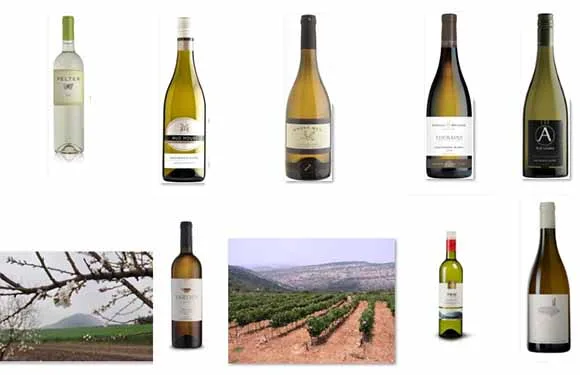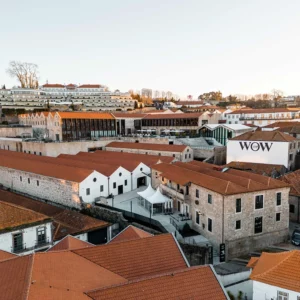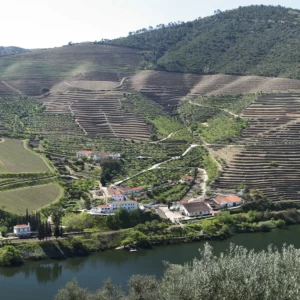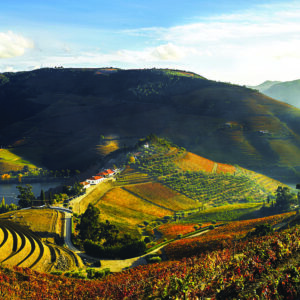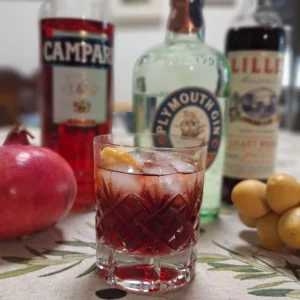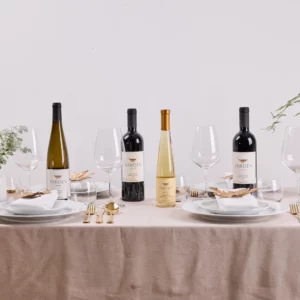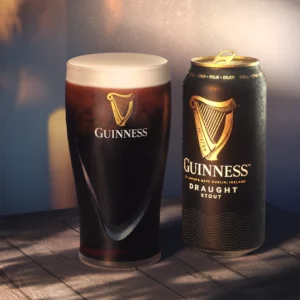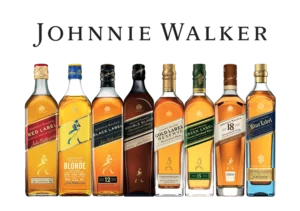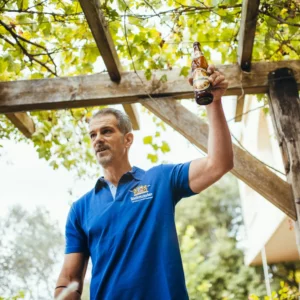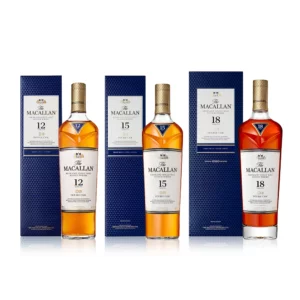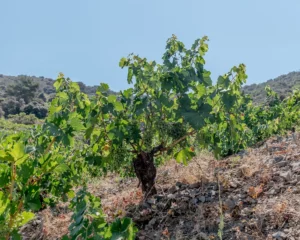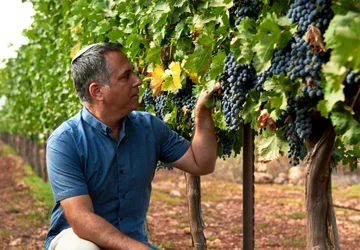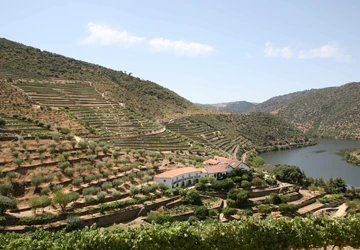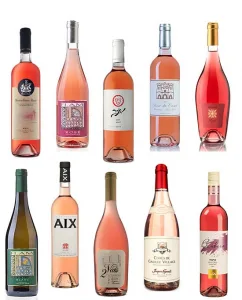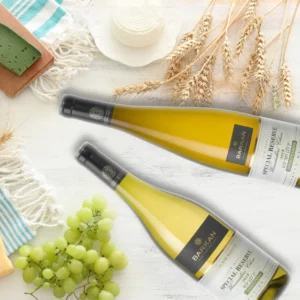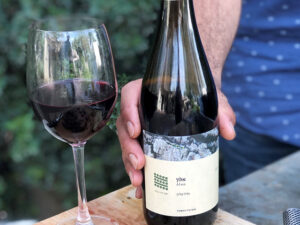The first varietal Sauvignon Blanc in Israel, was produced by Carmel Winery in the 1960’s and the first Israeli Sauvignon Blanc exported was Carmel’s in the early 1970’s. The first wine from the Golan Heights Winery to gain notice in America, with headlines such as: “Israel’s first world class wine” was not their award winning Yarden reds, but their Yarden Sauvignon Blanc 1983!
In spite of this, the finest Israeli wine ever made from Sauvignon Blanc in those days was the unique Yarden Late Harvest 1988, a wonderful, unforgettable dessert wine that was never replicated. Apart from that, there was a memorable Sauvignon Blanc tasting organized by Carmel Mizrahi and Riedel, the Rolls Royce of glassware. It was then a rare occasion in that winemakers from different wineries brought wines for evaluation in different Riedel glasses and the results contributed to Riedel fashioning their new glass designed specifically for Sauvignon Blanc.
When I came to Israel, 75% of the wine sold was white and when the ’60 Minutes’ television program in America changed preferences to red wines overnight, many Sauvignon Blanc vines had to be uprooted or grafted with something more popular.
However, it was not until the 2000’s, that Israel started making Sauvignon Blancs really well. I remember Dalton Sauvignon Blanc was one of the first of the new wave to gain notice.
The variety is known for producing aromatic wines, with bags of acidity. It is particular popular as a restaurant wine to match with food and also its refreshing, zingy character matches well with our climate.
Sauvignon Blanc will never be the most famous white wine grape. Chardonnay at its best as in white Burgundy and Riesling, particularly German Riesling, can make truly breathtakingly great wines. However as a wine that is crisp with great acidity, Sauvignon Blanc is difficult to beat.
Sauvignon Blanc is very aromatic. Not as pronounced as Gewurztraminer and Muscat maybe, but reasonably recognizable all the same. The aromas are of gooseberries, blackcurrant leaves, tomato bush, asparagus and tropical fruits. There is a pronounced grassy and herbaceous character.
Sauvignon Blanc is certainly better than most Chardonnays as a wine to accompany food. It is less round and fat, lighter and more aromatic. It is also usually less expensive than Chardonnay.
The crunching acidity makes it perfect to accompany a whole fish cooked under the grill and it goes well with oily fish. Its herbaceous character makes it a good match for baked or grilled vegetables. Its acidity makes it great with tomato dishes and it is versatile with mezze, hors d’oeuvres and even Sushi. Israeli Sauvignon Blancs should usually be drunk young, or as soon as possible after the harvest, as it is not a wine to improve with age, though there some exceptions. It should be served cold.
Most people don’t know that Sauvignon Blanc is a parent of Cabernet Sauvignon. The name probably comes from the French ‘sauvage’, meaning ‘wild’. Over the years, the region most associated with Sauvignon Blanc is the central Loire Valley in France.
Wines with names like Sancerre and Pouilly Fumé, are very dry, crisp and with a lean, pungent, herbaceous aroma. Sancerre, and Chablis for that matter, are names that are almost ever present on Israeli wine lists and are very popular, even with those who have no idea that these are local names respectively for a Sauvignon Blanc and Chardonnay! Sancerres tend to be grassier (reminiscent of the smell of recently cut grass), showing greater minerality, with a smoky and flinty aspect.
The other place that produces wonderful Sauvignon Blancs is New Zealand, where all the flavors are magnified as if being seen through a microscope. It is the sheer intensity of fruit, which is immediately noticeable, particularly from the Marlborough region, in the South Island. Fruit and flavors are riper and there are more tropical flavors, like lime and pineapple. It will be more intense and powerful but less acidic than its French cousin.
Sauvignon Blanc is also the grape variety for Bordeaux white wines, where it is normally partnered by Semillon, a classic blend. Semillon is fatter and matches the more pointed Sauvignon Blanc perfectly, which develops a more lemony character there.
Other countries to make very good Sauvignon Blancs are Chile and South Africa. In California the great Robert Mondavi aged his Sauvignon Blanc in oak barrels and renamed it Fumé Blanc, and the name is often used for aged Sauvignon Blancs today. One of the more famous and original tasting notes ever, is attributed to the English Master of Wine, Jancis Robinson, who once referred to a Sauvignon Blanc as having an aroma of: “Cats pee on a gooseberry bush!” I hope this does not put you off, as these are some of the most refreshing wines there are.
However if we are being honest, Israel’s best Sauvignon Blancs can never reach the grassiness or pungency of the French or New Zealand versions. Israeli Sauvignons tend to be riper, rounder and less vegetal.
In recent years though, there has been a revolution in Israeli white wines. They are so much better than previously. Now they are leaner, show good typical character of their grape varieties and have a sense of place about them.
The best value Sauvignon Blancs in Israel are the Tabor Adama Sauvignon Blanc and the Pelter Sauvignon Blanc. Tabor’s comes mainly from 40 year old vineyards in the Lower Galilee and seems to win the award for best sauvignon in Israeli competitions almost every year. The Pelter Sauvignon Blanc is arguably the most popular Sauvignon Blanc in restaurants. It is paler in color than the Tabor, not quite as aromatic but does have great acidity to give it a satisfyingly clean finish. Both represent wonderful value.
The best value imported Sauvignon Blanc is the Mud House Sauvignon Blanc 2016 from New Zealand. It is one of the best buys in today’s retail wine market giving you crazy value and an authentic taste of New Zealand at a very reasonable price of 65 shekels. It is a steal. It also has a screw top, which I applaud. Practical, easy to open, and you don’t have to find the wretched bottle opener, which you can never find when you need it!
Looking for better value in restaurants I recommend the Famille Bougier Touraine Sauvignon Blanc 2016 from the Loire Valley. Maison Bougrier is a successful family-owned négociant company in the Loire founded in 1885 and now run by the fifth generation of Bougriers. The wine is elegant, clean, well-made and restrained. All the Sauvignon characteristics are there, but in moderation. I also have to recommend the Astrolabe and Villa Maria Sauvignon Blancs. These both show the essence of New Zealand Sauvignon Blanc at its best.
At a higher end, you can reach for Israel’s finest Sauvignon Blancs. Two stand out. Both are rare, made in small quantities and are relatively expensive. The Tzora Shoresh White, made by Eran Pick, Israel’s only Master of Wine, is a masterpiece. It is a Sauvignon Blanc from the Shoresh vineyard in the Judean Hills. It is hard to image how he achieves the concentration, intensity and minerality.
If there was a Sauvignon Blanc you wanted to give as gift, or enjoy for a special meal, this would be it. Then there is the Shvo Vineyard Gershon Sauvignon Blanc from the Upper Galilee made by Gaby Sadan, another of Israel’s finest winemakers. This wine is less about Sauvignon’s traditional aromas, and more about texture, mouth feel and minerality. A unique expression.
Or, you can return to the Loire. The wines of Domaine Vacheron are newly imported to Israel. They are a top-quality, longstanding winemaking family and one of the few still to hold cellars in the actual town of Sancerre in the Loire. They adopt the most stringent sustainable practices in the vineyard and export two Sancerres to Israel which show the appellation at its best. Their Sancerre Les Romains is outstanding, made from 60 year old vines.
For those observing kashrut, the Tabor Adama Sauvignon Blanc and Tzora Shoresh are kosher. There is also Goose Bay Sauvignon Blanc showing the New Zealand style for kosher consumers. It is made by Philip Jones of the Spencer Hill Winery, which he founded in 1989 in New Zealand’s South Island near Nelson and he has made kosher wine since 2002. The Goose Bay Sauvignon Blanc is very good, just be sure to get a recent year as they sometimes get behind in vintages here. The wine is flash pasteurized and therefore is considered Yayin Mevushal, making it a useful option for banqueting functions.
Sauvignon Blanc is a fantastic food wine and ideal for drinking on a hot summers’ day, and we have a few of those. It can be young and flirtatious or rich and sophisticated. It is relatively inexpensive and in Israel it is usually called Sauvignon Blanc, which eases identification. Simple, to the point. Easy to choose and easy to drink, and more often than not available by the glass in restaurants. Sauvignon Blanc is back!
Adam Montefiore has been advancing Israeli wines for over 30 years and has been referred to as ‘the ambassador of Israeli wines.’ He writes a regular column called ‘Wine Talk’ for the Jerusalem Post. www.adammontefiore.com


